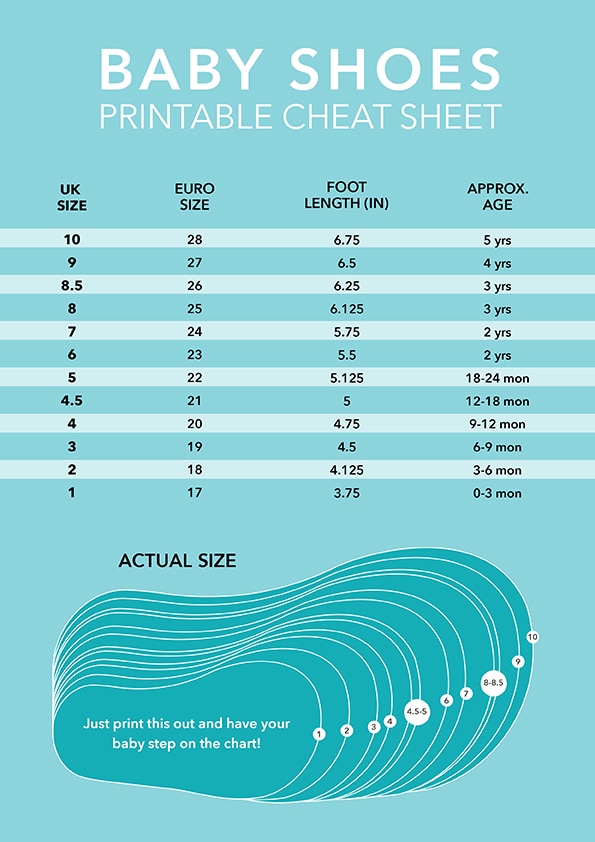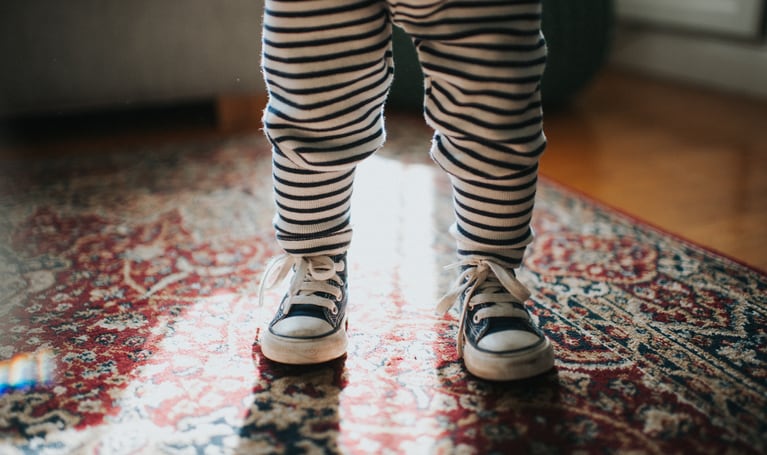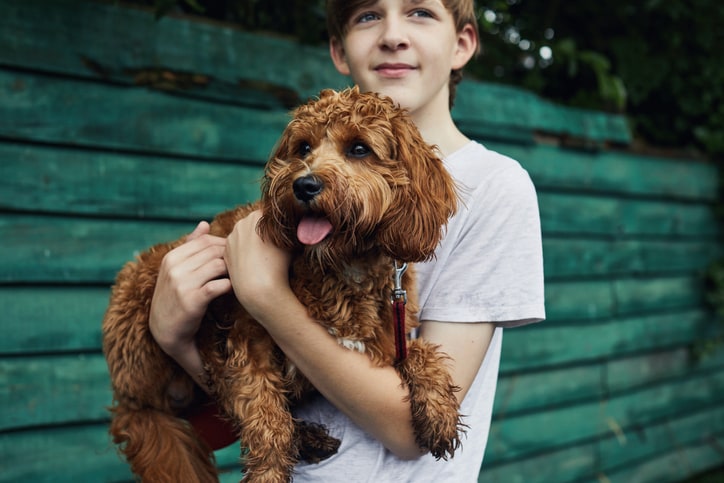It seems a shame to hide the feet of the little ones – but, especially in the early months, you’ll want to keep their toes covered and cozy. When they are about to take their first steps, knowing more about baby shoe sizes will help you get a good fit.
Searching for childcare? Find carers in your area now.
Before a baby starts to walk, shoes only have one purpose: keeping the feet warm. During the early months, you can dress your baby’s feet in socks or booties. Once she’s ready for a ‘real shoe,’ look for quality. Footwear protects her from the elements, and sometimes helps for traction.
A baby shoe made of soft leather is ideal, as it provides good flexibility in the sole. Walking toddlers can also wear sneakers and sturdy sandals. The shoes you purchase shouldn’t need to be ‘worn in’. They should fit comfortably from the start.
Does the shoe fit?
Because baby shoe sizes can vary between footwear brands and manufacturers, it’s important to have your child’s feet measured by a shoe professional. Once you have the length in inches, you can seek out a comfortable fit. Keep in mind that some stores label shoes only by age and tend to use wider ranges (for example 6-12 months or 12-18 months). Measure the child’s foot every three months to check whether she is outgrowing her shoes. You can also use the pinkie rule to check for fit – your baby’s shoe should be one (adult) pinkie width longer than her foot.
As a general guide, use the following chart of baby shoe sizes, which shows foot length matched to each approximate age. This chart works for most shoe styles your baby will wear at these ages, including sneakers, sporty sandals and boots.

Shoe Sizes
- Size 1 (Euro Size 17)
- Length: 3.75 inches (9.252 cm). Approximate Age: 0-3 months
- Size 2 (Euro Size 18)
- Length: 4.125 inches (10.4775 cm). Approximate Age: 3-6 months
- Size 3 (Euro Size 19)
- Length: 4.5 inches (11.43 cm). Approximate Age: 6-9 months
- Size 4 (Euro Size 20)
- Length: 4.75 inches (12.065 cm). Approximate Age: 9-12 months
- Size 4.5 (Euro Size 21)
- Length: 5 inches (12.7 cm). Approximate Age: 12-18 months
- Size 5 (Euro Size 22)
- Length: 5.125 inches (13.0175 cm). Approximate Age: 18-24 months
- Size 6 (Euro Size 23)
- Length: 5.5 inches (13.97 cm). Approximate Age: 2 years
- Size 7 (Euro Size 24)
- Length 5.75 inches (14.605 cm). Approximate Age: 2 years
- Size 8 (Euro Size 25)
- Length 6.125 inches (15.5575 cm). Approximate Age: 3 year
- Size 8,5 (Euro Size 26)
- Length 6.25 inches (15.875). Approximate Age: 3 year
- Size 9 (Euro Size 27)
- Length 6.5 inches (16.51 cm). Approximate Age: 4 year
- Size 10 (Euro Size 28)
- Length 6.75 inches (17.145 cm). Approximate Age: 5 year
Shop together
Take babies along when looking for footwear and put them in the socks they’ll be wearing with the shoes you’re buying. You should also shop in the afternoon as feet tend to swell as the day goes on. (Fitting them when they’re at their largest is best.) And be sure to buy shoes for the bigger foot, because feet aren’t always the same size.
Skip the trends
Say no to combat boots, flip-flops, wedges, strappy sandals or heels of any kind for your baby or toddler. They may seem super cute but the fashionable baby shoes can be difficult to walk in.
Many stores carry a wide range of shoes for babies and kids, so take your time when shopping for footwear. Buy the shoes that fit best, regardless of the age range or size that’s stamped on the shoe.
By freelance writer Jennifer Kelly Geddes

